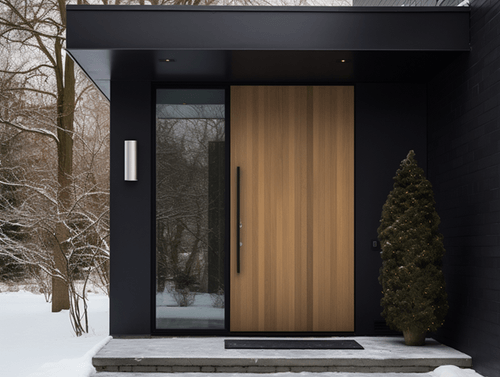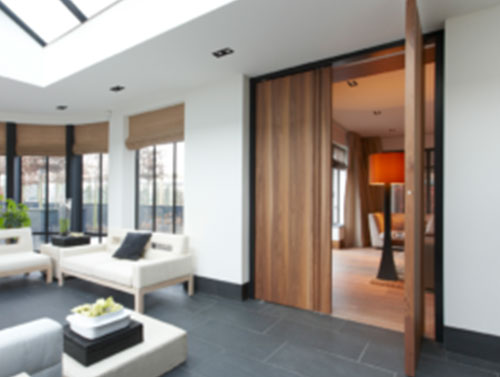If you’re looking for a way to add natural light to your home and create a more open feel, you may be considering glass panels on your wooden doors. Glass panels can be a beautiful addition to any door, but it’s important to consider a few factors before making a decision. Here’s what you need to know.If you’re considering adding glass to your wooden doors, you may be wondering if it’s the right decision for your home.
Glass panels can provide many benefits, including increased natural light, enhanced aesthetic appeal, and improved energy efficiency. However, there are also some potential drawbacks to consider, such as reduced privacy and higher maintenance requirements.
Adding Glass to Your Front Door

When it comes to adding glass to your front door, you also have the option of incorporating sidelights and transoms. Sidelights are narrow windows that flank the sides of the door. Sidelights offer several benefits, including increased natural light, improved ventilation, and enhanced visual appeal.
They can also provide a clear view of the exterior, which can be helpful for security purposes or for enjoying a beautiful view. Sidelights can be fixed or operable, depending on the desired level of functionality.

Transoms are windows that are located above the door and come in a variety of shapes and sizes. Transoms offer many of the same benefits as sidelights, including increased natural light, improved ventilation, and enhanced visual appeal. They can also provide a dramatic accent to the door and the surrounding space. Transoms are often used in conjunction with sidelights to create a complete glass surround, which can be particularly effective for large or grand entrances.
Benefits of Adding Glass to Your Front Door
Improved Aesthetics

Glass panels can add a touch of elegance and sophistication to your front door. They come in various designs and styles, from clear to frosted or patterned, giving you a range of options to choose from. Glass panels can also help to enhance the natural light in your home and make your space appear larger.
Allowing Natural Light In

Adding glass panels to a door is an excellent way to increase the amount of natural light that flows into a room. This is especially helpful for rooms that are naturally dim or lack windows. Natural light can make a significant difference in the look and feel of your home, creating a bright and inviting atmosphere. Natural light is not only beneficial for your mood but also for your health, as it has been shown to improve sleep, enhance productivity, and boost Vitamin D levels in the body. Additionally, more natural light can help reduce the need for artificial lighting, which can lead to energy savings and a reduced carbon footprint.
Increased Energy Efficiency

Glass panels in your wood door can help to improve energy efficiency in your home by allowing more natural light in, reducing the need for artificial lighting, and warming up your space. When selecting glass panels, choose energy-efficient options that have double pane glass to reduce heat loss in winter and heat gain in summer.
Enhanced Security
Glass panels are not necessarily a security threat. Modern glass panels are typically designed with tempered or laminated glass, which is stronger and more resistant to breaking than traditional glass. Additionally, adding glass panels to your door allows you to see who is outside before opening it, which can improve your overall home security.
Improved Curb Appeal

Adding glass panels to your wood door can give your home a fresh, updated look and increase your curb appeal. Glass panels can also be combined with sidelights and transoms to create a grand entranceway that impresses guests and adds value to your home.
Drawbacks of Adding Glass to Your Wood Door
Reduced Privacy
Glass panels in your wood door can reduce privacy and leave your home more exposed to the outside world. To combat this, you can choose frosted or patterned glass, or opt for glass panels that are located higher up on the door.
Maintenance
Glass panels require regular cleaning and maintenance to keep them looking their best. This can be a hassle for some homeowners who prefer low-maintenance options.
Cost
Adding glass panels to your wood door can be more expensive than opting for a solid wood door. The cost will depend on the size, design, and type of glass you choose.
Types of Glass in Front Door
When considering adding glass to your front door, there are several types of glass to choose from that can enhance the appearance and functionality of your entryway. Here are some common types of glass that are used for front doors:
Clear Glass

This is the most common type of glass used in front doors. Clear glass allows for maximum light and visibility and is perfect for homeowners who want to showcase their entryway.
Frosted Glass

Frosted glass has a translucent appearance that allows light to enter while also providing privacy. This type of glass is often used for front doors in homes where privacy is a concern.
Patterned Glass

Patterned glass comes in a variety of designs and textures, such as etched or stained glass. This type of glass is perfect for homeowners who want to add a decorative touch to their front door while still allowing light to enter.
Glass with Iron

Glass with iron is a type of glass that is reinforced with iron bars or grids, providing extra strength, security and beautiful aesthetics. This type of glass is often used in front doors for homeowners who want to increase the security of their home without sacrificing natural light. The iron provides additional strength to the glass panel and can be designed in a variety of patterns.
Conclusion
Ultimately, the decision of whether or not to add glass to your wooden doors will depend on your personal preferences and the specific needs of your home. Adding glass panels to your front door can provide many benefits, including increased natural light and enhanced aesthetic appeal.
However, there are also some potential drawbacks to consider, such as reduced privacy and higher maintenance requirements. When making your decision, it’s important to consider your personal preferences, the specific needs of your home, and the potential costs and complexity of the installation process.






